Many games are played around the world, some games are physical, some games are mental, some games are played with technical assistance. Some games are played with material things. The most interesting and mental-conscious game is the game of chess.
In today's era, the ruler of strategy games is called "chess". The game of chess is also mentioned in the epic Ramayana. Lankapati Ravana made a game of chess to keep his wife Mandodari in mind. In ancient India, these games were not played only for fun and enjoyment. Rather, many lives were at stake in these games.
History of Chess
The first and most important thing is that the game of chess was started in India itself and after leaving India, this game became famous among the people of the world. The beginning of playing chess in India is also considered from the time of the 5th-6th century. This was the first game that was played using the brain.
There is such evidence that chess was born in India during the rule of the Chandragupta dynasty (280-250 BC). People believe that the game of chess originated from Persia. In ancient India, this game was known as "Chaturanga". The game of Chaturanga was discovered in India in the 4th century. By the way, the game of chess is played between two opponents. But the game of Chaturanga was played between four people.
Chess Game Goal
The game of chess is a game played between two people in opposition to each other. There are a total of 64 square squares on the chessboard, which are of white and black color. Each player has 16-16 pieces, each team has 1 King, 1 Queen, 2 Rook (Elephants), 2 Knight (Horses), 2 Bishop (Camels), and 8 Pawns. The goal in this game is how to checkmate (checkmate) the player in front. A check-and-trick is such a situation when someone occupies the place of the king, and no one can remove him from that possession.
Start of the Game and its Rules
Before starting the game all the pieces are placed in their designated places on the chessboard. One player takes a black piece and the other a white piece. In the chessboard, elephants are placed in both the corners, then in the mine adjacent to it, the horses are placed in both the corners, then the camels are placed on both sides, then the king on the left and the queen on the right. 8 pawns are placed in the line in front of them. The player who takes the white piece makes the first move.
Information About Moving Pieces
1. King 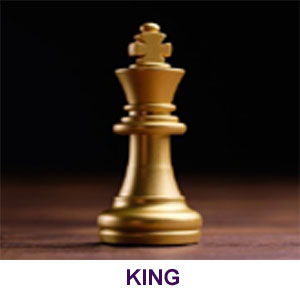
The king is the most important piece in this game of chess. The king is the main of this game, in this game, the king has to be saved, that is, this game is played only to save the king. Despite being the most important, the king is the weakest, because the king can move only one step, in any direction, up, down, right, side, or diagonally.
2. Queen 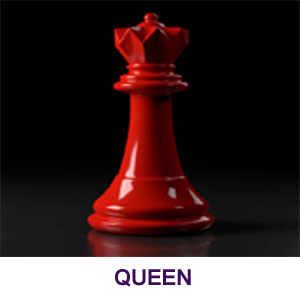
Wazir is also known as the queen. The wazir is the most powerful in this game of chess, because it can move in any direction, diagonally, straight, forward, backward, any number of squares.
3. Rook (Elephant) 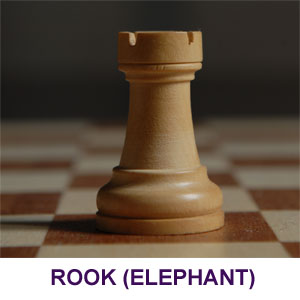
The elephant can walk any number of squares as per his wish, but it can only walk vertically or horizontally, but it cannot walk diagonally. Elephants A player has 2, both of them work together, and protect each other.
4. Bishop (Camel) 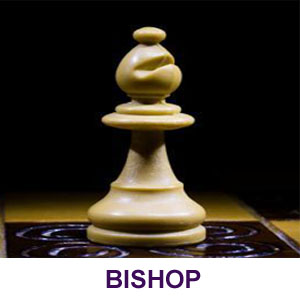
In this game of chess, the camel can move any number of squares according to his wish, but it only moves diagonally. A player has two camels and both of them work together.
5. Knight (Horse) 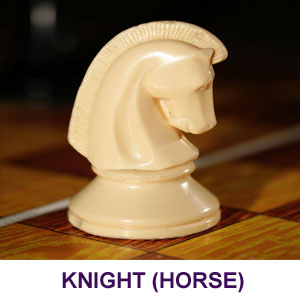
The movement of the horse is different in this game because the horse's gait is very different from everyone else. It moves two and a half houses in any one direction (like L shape). The horse is the only piece that can move over any other piece. Which is also called two and a half steps in colloquial language. This too in the game of chess there are two on one side.
6. Pawn 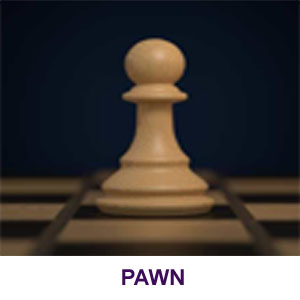
In this game of chess, each player has 8 pawns. A pawn acts like a soldier. It goes one step ahead but hits another piece diagonally. The pawn moves only one square at a time, only in the first move it can move 2 squares according to the player's choice, but it cannot move back or hit. If someone comes in front of the pawn, it cannot be pushed back, nor can it directly hit the person in front.
Other Important Rules of the Game of Chess
Cancel
This is a very important rule in the game of chess, in this, you can do 2 things simultaneously. The first is that along with saving the king, you can remove the elephant from the corner and bring it into the middle of the game. In this, the player can move his king 2 squares instead of one square, as well as keep the elephant on the side of the king, the conditions for castling are as follows –
1. Casting in the game can only be done by the king once.
2. This should be the king's first move as well as the elephant's first move.
3. There should not be any piece between the king and the elephant.
4. There should be no check or defeat on the king.
Tie (Draw)
If no winner is able to come out in the game, then in such a situation the game is drawn. There can be five reasons for a draw, which are as follows –
1. Both players agree to stop the game.
2. When there are no pieces left on the board to check and beat.
3. A player may call a draw if the same position is formed three times in a row.
4. If a player makes a move, but his king is not checkmated, but still has no room to make another move.
Some Highlights of the Board
Before preparing the board, it is important to know some important things as we have told you above that, it is a game of two people. In view of this, two different colors are used on the board.
Look at the combination of colors on the board, such as green-white, brown-white, etc. But most chess boards are displayed in black-and-white boxes.
The total number of square boxes is 64 out of which 32 are white squares and the rest are square boxes of other colors. There are 3 types of lines on a chessboard.
Of these, eight horizontal and vertical lines have been made. The third line is called Diagonal, which in Hindi is called Vikarna i.e. diagonal line.
Vertical Line
This is a very important line, on which all the pieces move towards the opponent's house. In between, they also kill the pieces of their opponent player. In the Chess World, this line is called Files.
Horizontal Horizontal Lines
In the world of chess, this horizontal line is known as ranks and these lines hold great importance. With the help of this line, the pieces can move in any direction and they also use it for their defense.
Diagonal Lines
Diagonal is a special type of line and certain pieces are free to make their own moves, such as the vizier (minister), camel, and pawn. However, the vizier can walk in other directions. In addition, the soldier can hit an opponent's piece while moving diagonally.
Total Number of Pieces
The total number of pieces is 16. Out of which there are 1 king, 2 camels, one vizier, two horses, 2 elephants, and 8 soldiers.
International Chess Federation (FIDE)
The International Chess Federation (FIDE) is the governing body of the sport of chess, and it regulates all international chess competitions. Constituted as a non-governmental institution, it was recognized by the International Olympic Committee as a Global Sporting Organization in 1999.
FIDE currently has its headquarters in Lausanne, but it was initially founded in 1924 in Paris under the motto “Gens Una Sumus” (Latin for “We are one Family”). It was one of the very first International Sports Federations, alongside the governing bodies of the sports of Football, Cricket, Swimming, and Auto Racing. It is now one of the largest, encompassing 195 countries as affiliate members, in the form of National Chess Federations.
US Chess Federation (US Chess)
The US Chess Federation (US Chess) is the official governing body and nonprofit 501(c)(3) organization for chess players and chess supporters in the United States. US Chess represents the United States in the World Chess Federation (FIDE), connecting our members to chess players around the world. Founded in 1939 with the merger of the American Chess Federation and the National Chess Federation, US Chess has grown to serve over 93,000 members and 2,000 affiliated chess clubs and organizations.